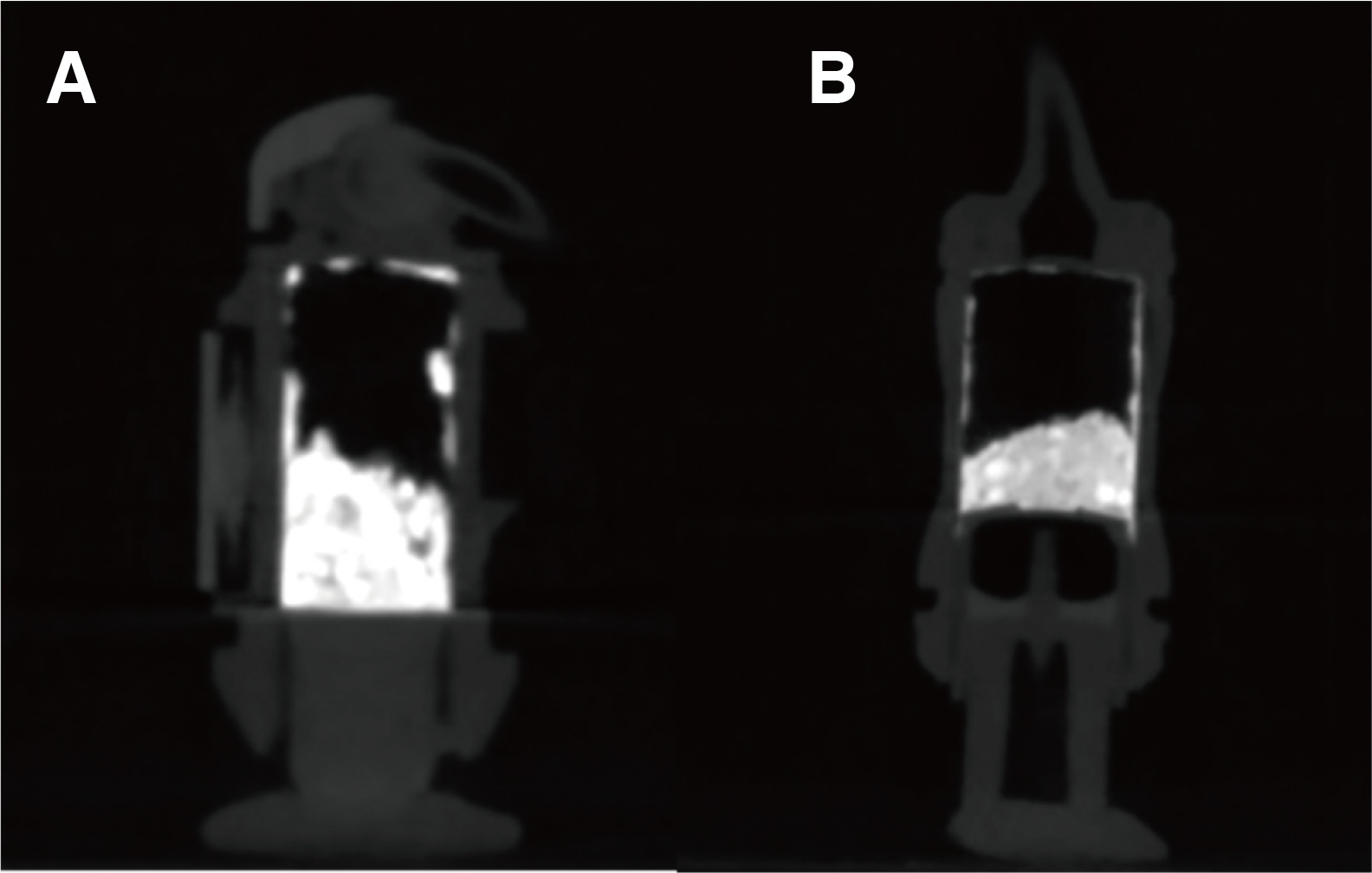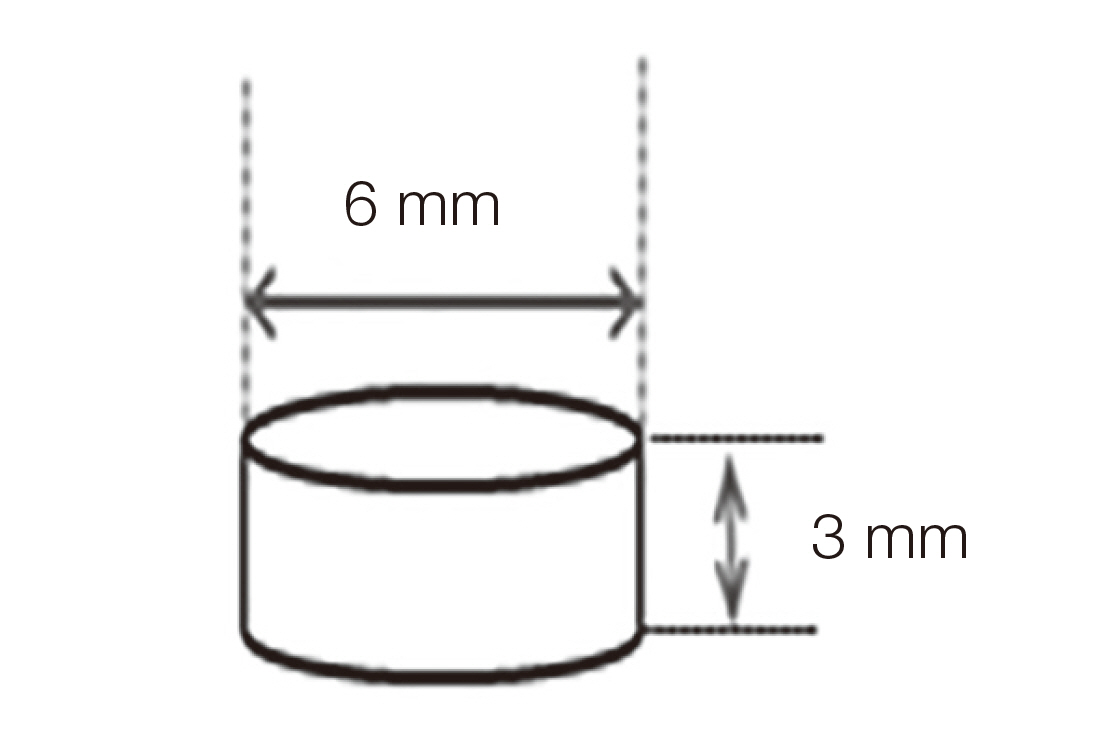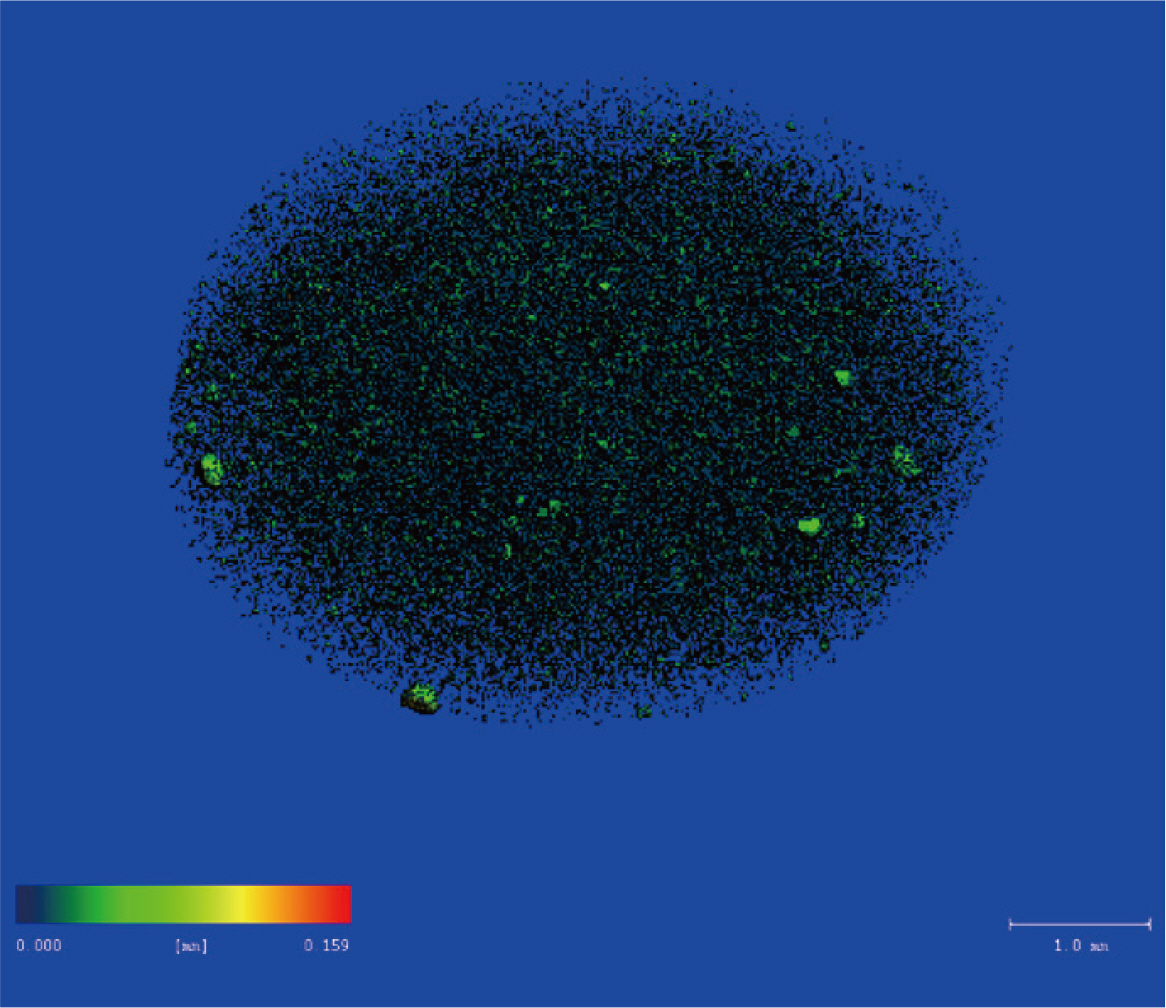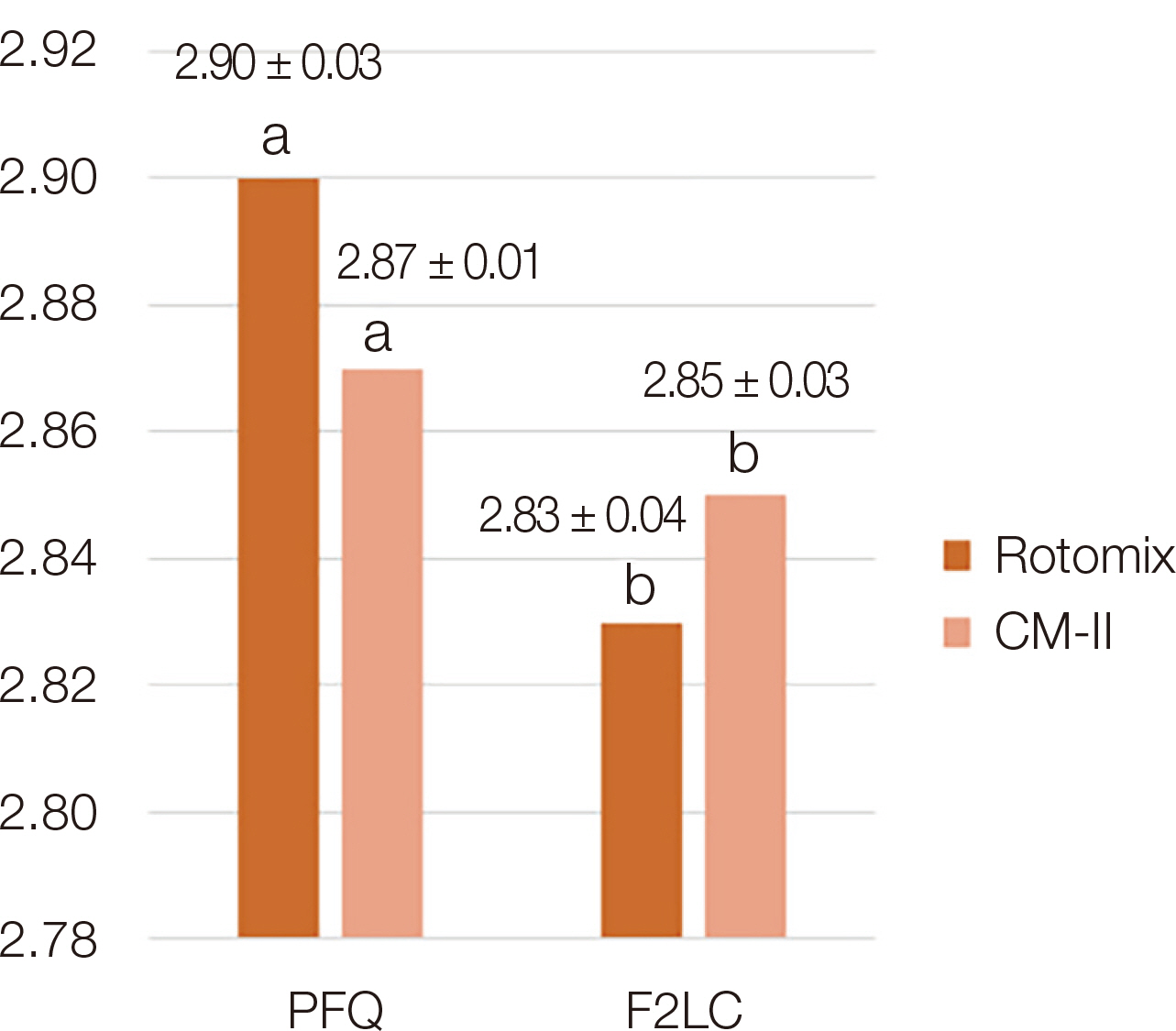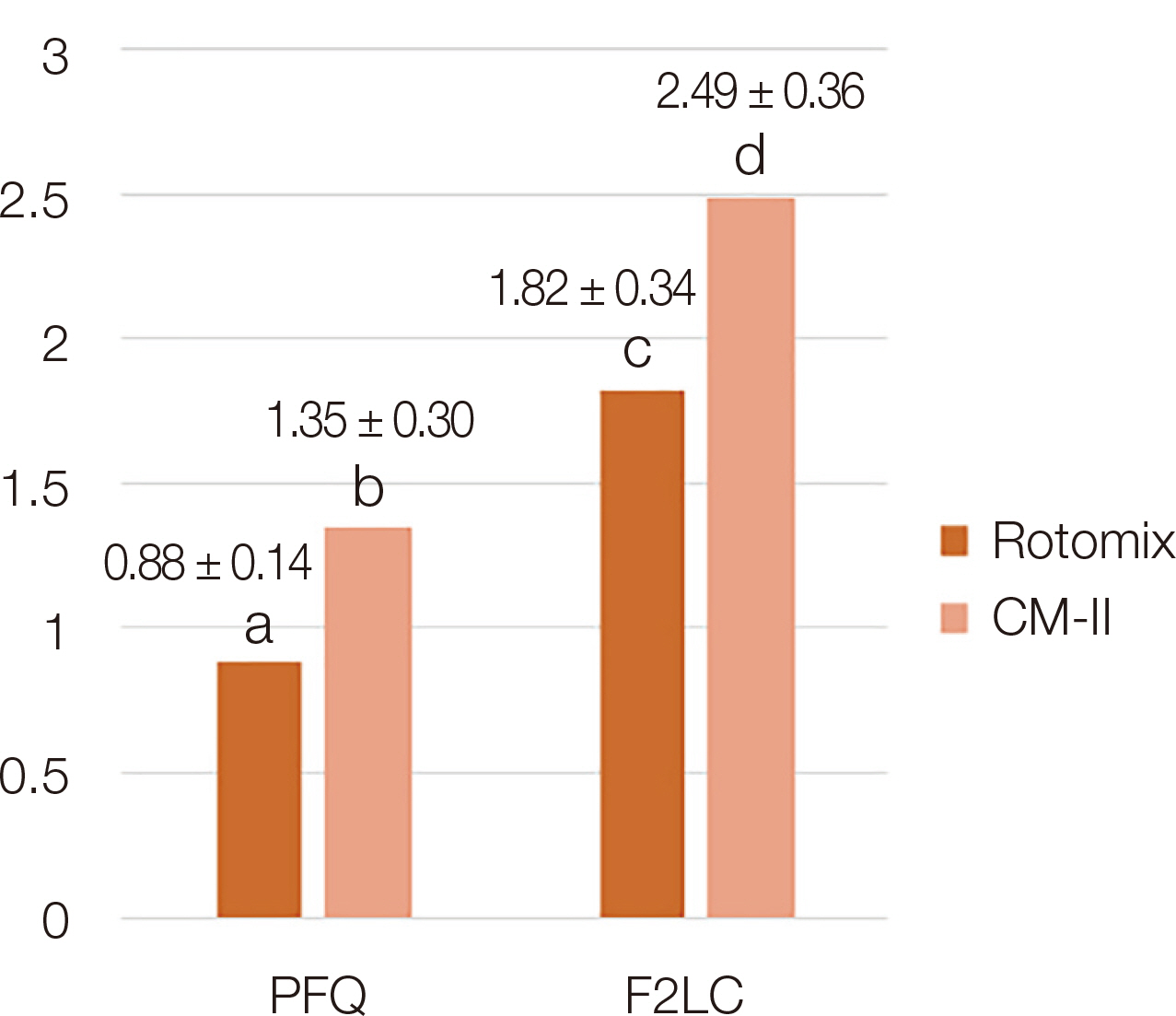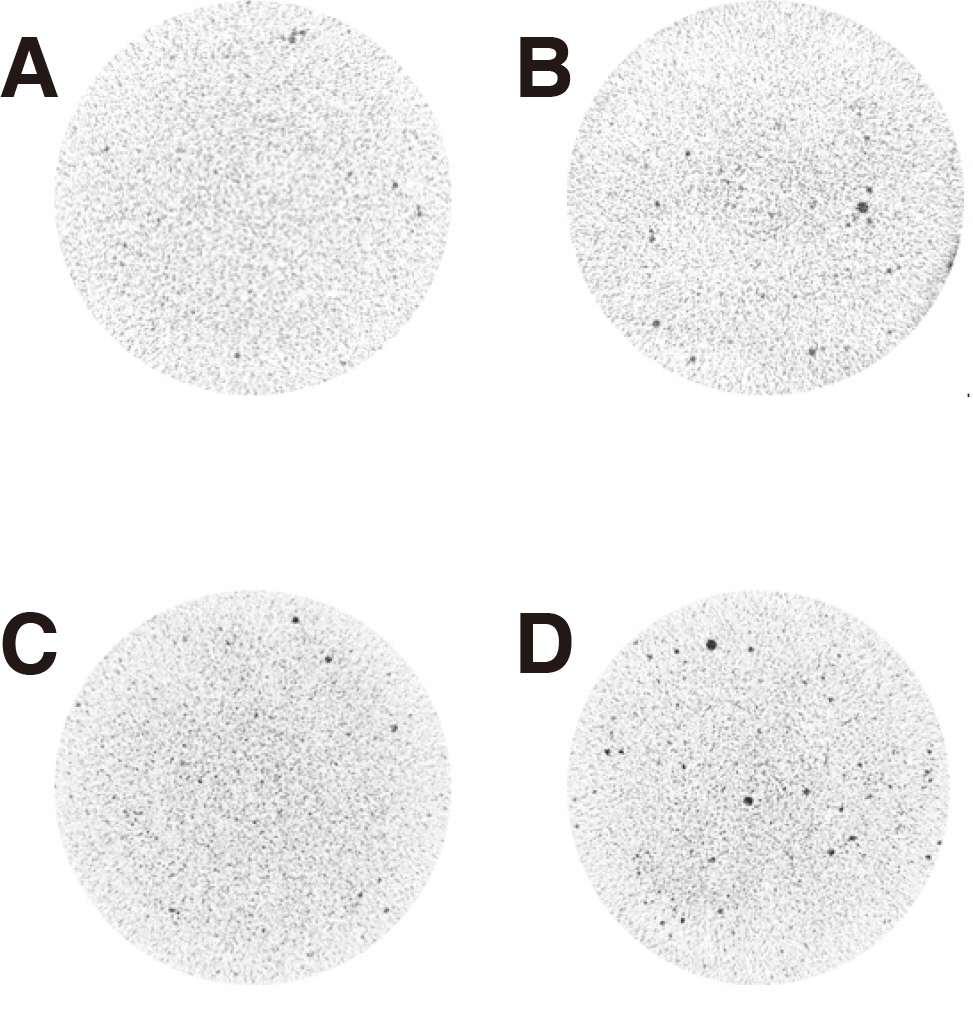J Dent Rehabil Appl Sci.
2021 Dec;37(4):217-224. 10.14368/jdras.2021.37.4.217.
Comparison of capsule type resin modified glass ionomer porosity according to mixing methods
- Affiliations
-
- 1Department of Conservative Dentistry, College of Dentistry, Gangneung-Wonju National University, Gangneung, Republic of Korea
- KMID: 2525996
- DOI: http://doi.org/10.14368/jdras.2021.37.4.217
Abstract
- Purpose
The purpose of this study was to evaluate the porosity of resin modified glass ionomer (RMGI) by different mixing methods.
Materials and Methods
Five specimens were prepared for each groups according to capsules and mixing methods. Two RMGI capsule and two mixing machines were used for this study. One resin-modified glass ionomer cement is Fuji II LC (F2LC) and the other is Photac Fil Quick Aplicap (PFQ). For Mixing of RMGI capsule, Rotomix using rotating motion and CM-II using shaking motion were used. After measuring height, radius and mass of specimens, Density was calculated. And porosity was measured using micro-computed tomography (micro-CT). All data were statistically analyzed using T-test, two-way ANOVA to compare between groups at 95% significance level to evaluate the affect of capsule and mixing method on the porosity.
Results
The porosity was observed in all specimens generally. And there is significant differece between porosities according to RMGI capsule and Mixing method. The porosity of PFQ was lower than that of F2LC and the porosity of Rotomix was lower than that of CM-II. Conclusion: There was a difference of porosity according to kind of capsules and mixing methods. When using same capsule, less porosity was observed on PFQ than F2LC. When using same mixing mehod, less porosity was observed on Rotomix than CM-II. Using mixing machine of same coporation as that of RMGI capsule did not lead to lower porosity. Therefore, Selecting optimal mixing machine is important.
Figure
Reference
-
References
1. Nicholson JW, Sidhu SK, Czarnecka B. 2020; Enhancing the mechanical properties of glass-ionomer dental cements: a review. Materials. 13:2510. DOI: 10.3390/ma13112510. PMID: 32486416. PMCID: PMC7321445.2. Al-Taee L, Deb S, Banerjee A. 2020; An in vitro assessment of the physical properties of manually-mixed and encapsulated glass-ionomer cements. BDJ Open. 6:12. DOI: 10.1038/s41405-020-0040-x. PMID: 32821430. PMCID: PMC7419565.3. Nomoto R, Komoriyama M, McCabe JF, Hirano S. 2004; Effect of mixing method on the porosity of encapsulated glass ionomer cement. Dent Mater. 20:972–8. DOI: 10.1016/j.dental.2004.03.001. PMID: 15501326.4. Xie D, Brantley W, Culbertson B, Wang G. 2000; Mechanical properties and microstructures of glassionomer cements. Dent Mater. 16:129–38. DOI: 10.1016/S0109-5641(99)00093-7. PMID: 11203534.5. Bertenshaw BW, Piddock V. 1993; Porosity in water-based dental luting cements. J Mater Sci Mater Med. 4:415–7. DOI: 10.1007/BF00122201.6. McCabe JF, Ogden AR. 1987; The relationship between porosity, compressive fatigue limit and wear in composite resin restorative materials. Dent Mater. 3:9–12. DOI: 10.1016/S0109-5641(87)80053-2. PMID: 3471609.7. Barralet J, Gaunt T, Wright AJ, Gibson IR, Knowles JC. 2002; Effect of porosity reduction by compaction on compressive strength and microstructure of calcium phosphate cement. J Biomed Mater Res. 63:1–9. DOI: 10.1002/jbm.1074. PMID: 11787022.8. Sulaiman TA, Abdulmajeed AA, Altitinchi A, Ahmed SN, Donovan TE. 2018; Effect of resin-modified glass ionomer cement dispensing/mixing methods on mechanical properties. Oper Dent. 43:E158–65. DOI: 10.2341/17-166-L. PMID: 29570021.9. Malkoç MA, Sevimay M, Tatar İ, Çelik HH. 2015; Micro-CT detection and characterization of porosity in luting cements. J Prosthodont. 24:553–61. DOI: 10.1111/jopr.12251. PMID: 25557068.10. 2007. ISO Specifications 9917-1. Dentistry -Water-based cements- Part 1: Powder/liquid acid-base cements.11. Al-Kadhim AHA, Abdullah H. 2018; Effect of Porosity on Compressive Strength of Resin Modified Glass Ionomer Luting Cements. IMJM. 17:33–40.12. Milutinović-Nikolić AD, Medić VB, Vuković ZM. 2007; Porosity of different dental luting cements. Dent Mater. 23:674–8. DOI: 10.1016/j.dental.2006.06.006. PMID: 16860859.13. Billington RW, Williams JA, Pearson GJ. 1990; Variation in powder/liquid ratio of a restorative glassionomer cement used in dental practice. Br Dent J. 169:164–7. DOI: 10.1038/sj.bdj.4807311. PMID: 2206679.14. Covey DA, Ewoldsen NO. 2001; Porosity in manually and machine mixed resin-modified glass ionomer cements. Oper Dent. 26:617–23. PMID: 11699187.15. Torres FFE, Guerreiro-Tanomaru JM, Bosso-Martelo R, Espir CG, Camilleri J, Tanomaru-Filho M. 2019; Solubility, porosity, dimensional and volumetric change of endodontic sealers. Braz Dent J. 30:368–73. DOI: 10.1590/0103-6440201902607. PMID: 31340227.16. Fleming GJ, Kenny SM, Barralet JE. 2006; The optimisation of the initial viscosity of an encapsulated glassionomer restorative following different mechanical mixing regimes. J Dent. 34:155–63. DOI: 10.1016/j.jdent.2005.05.008. PMID: 16085350.17. Fleming GJ, Zala DM. 2003; An assessment of encapsulated versus hand-mixed glass ionomer restoratives. Oper Dent. 28:168–77. PMID: 12670073.18. Rupp D, Hermesch CB, Charlton DG. 1996; Effect of triturator speed variation on physical properties of encapsulated glass-ionomer luting cements. Oper Dent. 21:96–102. PMID: 9002868.19. Mount GJ. 2002. An atlas of glass-ionomer cements. A clinician's guide. Martin Dunitz;London: p. 1–42. DOI: 10.3109/9780203215456.
- Full Text Links
- Actions
-
Cited
- CITED
-
- Close
- Share
- Similar articles
-
- Erratum: Comparison of capsule type resin modified glass ionomer porosity according to mixing methods
- The shear bond strength of two adhesives bonded to composite resin and glass ionomer cement restorations
- Color Stability of Alkasite Restorative Material: in vitro Studies
- Change in shear bond strength of orthodontic brackets using self-etching primer according to adhesive types and saliva contamination
- COMPARISON OF SHEAR BOND STRENGTH AND MARGINAL LEAKAGE OF RESIN MODIFIED GLASS IONOMER CEMENTS

